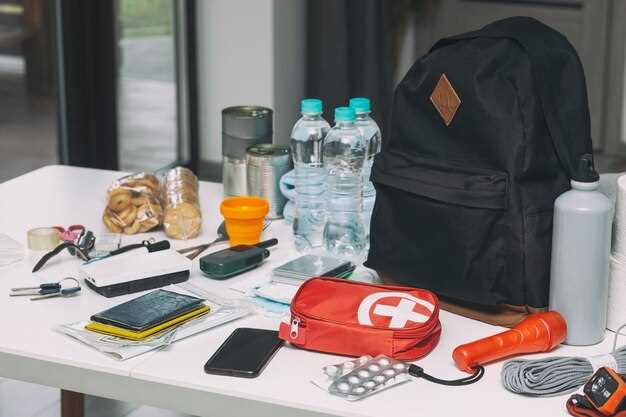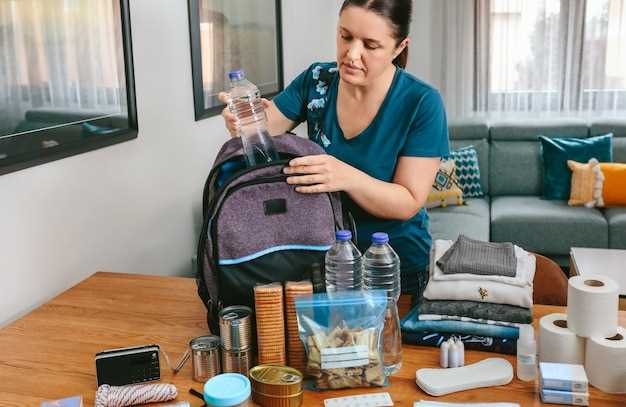Building a 72-Hour Emergency Kit – What to Include

In times of crisis, having a well-prepared emergency kit can make all the difference in ensuring safety and survival. Disasters can strike without warning, leaving us with limited time to react. A 72-hour emergency kit is designed to provide essential supplies to sustain you and your loved ones for at least three days, helping you navigate through challenging situations.
The key to a successful emergency kit lies in its contents. Each item serves a specific purpose, aiding in food, water, shelter, and medical needs, among other crucial aspects. By carefully selecting and organizing these items, you can enhance your preparedness and reduce stress during emergencies. Knowing what to include in your kit is essential, as it can provide peace of mind and a greater sense of control in uncertain times.
As we explore the essential components of a 72-hour emergency kit, consider your unique needs, the environment you live in, and any potential risks you may face. This comprehensive approach will ensure that you are adequately equipped to handle various emergency situations while fostering resilience and confidence in your readiness plan.
Building a 72-Hour Emergency Kit: Key Items to Include
An emergency kit is essential for preparedness during unexpected situations such as natural disasters or emergencies. A well-stocked 72-hour emergency kit can provide critical supplies for you and your family. Here are key items to include:
- Water: Include at least one gallon of water per person per day for at least three days, totaling a minimum of 9 gallons for a family of three.
- Food: Pack non-perishable food items such as canned goods, granola bars, dried fruits, and nuts that can sustain each person for three days.
- First Aid Kit: Ensure your kit contains adhesive bandages, antiseptic wipes, pain relievers, gauze pads, and any personal medications needed.
- Flashlight: A reliable flashlight with extra batteries is crucial for visibility during power outages.
- Multi-tool: A multi-tool can assist with various small tasks, making it a versatile addition to your emergency supplies.
- Personal hygiene items: Include items such as wet wipes, hand sanitizer, toothbrushes, toothpaste, and feminine hygiene products.
- Emergency blanket: Compact, reflective space blankets can help retain body heat in cold situations.
- Radio: A battery-operated or hand-crank emergency radio is vital for staying informed about weather updates and emergency information.
- Identification: Store important documents, including identification cards, insurance information, and medical records, in a waterproof bag.
- Cash: Keep a small amount of cash in small denominations, as ATMs may not be functioning.
Regularly check and update your emergency kit to ensure that all items remain usable and meet your family’s needs.
Food and Water: What to Pack for 72 Hours

When preparing a 72-hour emergency kit, food and water are critical components for survival. The general rule is to include at least one gallon of water per person per day. This ensures adequate hydration even in challenging conditions. Consider packing water purification tablets or a portable filter to enhance your ability to source safe drinking water if needed.
In terms of food, choose non-perishable items that are high in calories and easy to prepare. Canned goods, energy bars, dried fruits, and nuts are excellent options. Look for ready-to-eat meals that require no cooking, such as freeze-dried or MREs (Meals Ready-to-Eat). These options provide necessary nutrients without the need for cooking equipment.
Fruits and vegetables can also be packed in dehydrated form. They provide essential vitamins and can help maintain energy levels. Be sure to include a manual can opener if your food options include canned items. Additionally, consider dietary restrictions and pack suitable snacks for all family members.
Remember to check the expiration dates on your food items regularly and rotate them to ensure freshness. In an emergency, having reliable access to food and water can significantly impact your ability to stay safe and maintain strength.
First Aid Supplies: Critical Items for Health and Safety

In the preparation of a 72-hour emergency kit, including essential first aid supplies is crucial for ensuring health and safety during unforeseen circumstances. These items can assist in treating minor injuries and sustaining individuals until professional medical help becomes available. Below is a list of critical items to incorporate into your survival kit.
| Item | Purpose |
|---|---|
| Adhesive Bandages | To cover small cuts and abrasions, preventing infection. |
| Gauze Pads | For larger wounds that require absorption and protection. |
| Medical Tape | To secure gauze pads and dressings in place. |
| Antiseptic Wipes | For cleaning wounds to reduce the risk of infection. |
| Antibiotic Ointment | To apply on wounds after cleaning to promote healing. |
| Pain Relievers | To alleviate pain due to injuries or illnesses. |
| Scissors | For cutting tape, gauze, or clothing to access injuries quickly. |
| Tweezers | To remove splinters or debris from wounds. |
| Instant Cold Packs | To reduce swelling or pain from injuries. |
| Latex or Nitrile Gloves | To protect both the injured and the caregiver when treating wounds. |
| CPR Face Shield | To perform CPR safely while minimizing contamination. |
Having these essential first aid supplies readily available in your emergency survival kit will empower you to respond effectively to health emergencies, create a safer environment, and potentially save lives. Regularly check and replenish your kit to ensure that all items are current and functional.
Tools and Gear: Must-Have Equipment for Any Situation
When preparing a 72-hour emergency kit, including the right tools and gear is essential for survival in any situation. These items will help you navigate challenges, secure shelter, and access food and water.
Multi-tool: A multi-tool is invaluable for various tasks, from cutting and fastening to opening cans. This compact device reduces the need for multiple tools, making it a space-efficient choice in emergencies.
Flashlight: A reliable flashlight with extra batteries is crucial during power outages or low-light conditions. It provides visibility, helps you navigate unfamiliar terrain, and can also be used to signal for help.
First Aid Kit: A comprehensive first aid kit is necessary for treating injuries until professional help is available. Ensure it includes adhesive bandages, antiseptic wipes, gauze, scissors, and any prescription medications you may need.
Fire Starter: Having a fire starter, whether it’s matches, a lighter, or a ferrocerium rod, is critical for warmth, cooking, and signaling. Ensuring it is waterproof or stored in a waterproof container will enhance reliability.
Paracord: Paracord is a versatile item that can be used in numerous ways–repairing gear, securing tents, or even creating a makeshift shelter. A length of at least 50 feet is recommended for emergency situations.
Emergency Blankets: Lightweight and compact, emergency blankets retain body heat and protect against hypothermia. They can also be used as a signal device with their reflective surfaces.
Water Filtration System: Clean water is vital for survival. A portable water filtration system or water purification tablets will ensure that you can safely drink from natural sources.
Tarp or Emergency Tent: A tarp or emergency tent provides essential shelter from the elements. They are easy to set up and can protect you from rain, wind, and sun exposure.
Including these essential tools and gear in your emergency kit will significantly enhance your ability to cope with unpredictable situations, ensuring you are prepared for survival during any emergency. Stay safe and equipped!
